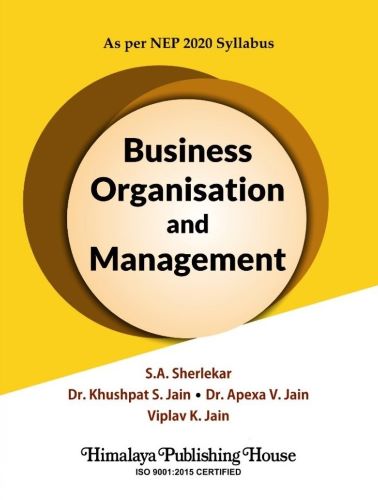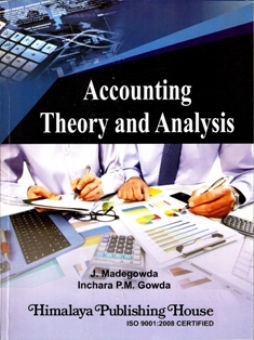It gives us immense pleasure to present the book titled Business Organisation and Management for undergraduate programmes of the Universities of Odisha. The book is divided into seven chapters, with the final chapter dedicated to case studies and management scenarios, providing undergraduate students with practical insights into organisation and management. The book addresses various management and organisational concepts in a simple and lucid manner, catering to the learning needs of undergraduate students.
Contents –
Chapter 1: Introduction to Business
1.1 Introduction; 1.2 Concept of Business; 1.3 Scope/Classification of Business; 1.4 Nature of Business; 1.5 Concept of Industry; 1.6 Classification of Industry; 1.7 Concept of Commerce; 1.8 Classification of Commerce; 1.9 Concept of Trade; 1.10 Classification of Trade; 1.11 Hindrances to Trade; 1.12 Concept of Aids-to-trade; 1.13 Classification of Aids-to-trade; 1.14 Trade vs. Aids-to-trade; 1.15 Concept of Business Objectives; 1.16 Nature/Characteristics of Business Objectives; 1.17 Classification of Business Objectives; 1.18 Functions of Business; 1.19 Concept of Corporate Social Responsibility (CSR); 1.20 Areas of CSR; 1.21 Arguments for CSR; 1.22 Arguments against CSR; 1.23 Ethical Conduct in Business; 1.24 Human Values in Business; Chapter Summary; Question Bank.
Chapter 2: Forms of Business Organisation – I
2.1 Introduction; 2.2 Forms of Business Organisations; 2.3 Factors Governing Choice of Form of Business Organisation; 2.4 Concept of Sole Trading Concern; 2.5 Characteristics of Sole Trading Concern; 2.6 Advantages of Sole Trading Concern; 2.7 Disadvantages of Sole Trading Concern; 2.8 Concept of Partnership; 2.9 Characteristics of Partnership; 2.10 Advantages of Partnership; 2.11 Disadvantages of Partnership; 2.12 Kinds of Partnership Firms; 2.13 Types of Partners; 2.14 Working Partner vs. Sleeping Partner; 2.15 Partnership Deed; 2.16 Limited Liability Partnership (LLP); 2.17 Sole Proprietorship vs. Partnership; 2.18 Concept of Joint Hindu Family Firm; 2.19 Characteristics of Hindu Undivided Family Business; 2.20 Advantages of Hindu Undivided Family Business; 2.21 Disadvantages of Hindu Undivided Family Business; 2.22 Sole Proprietorship vs. Hindu Undivided Family Firm; 2.23 Partnership Firm vs. Joint Hindu Family Firm; Chapter Summary; Question Bank.
Chapter 3: Forms of Business Organisation – II
3.1 Concept of Cooperative Organisation; 3.2 Characteristics of Cooperative Organisation; 3.3 Advantages of Cooperative Organisation; 3.4 Disadvantages of Cooperative Society; 3.5 Cooperative Society vs. Sole Trading Concern; 3.6 Cooperative Society vs. Partnership Firm; 3.7 Concept of Joint Stock Company; 3.8 Characteristics of Joint Stock Company; 3.9 Advantages of Joint Stock Company; 3.10 Disadvantages of Joint Stock Company; 3.11 Partnership Firm vs. Joint Stock Company; Chapter Summary; Question Bank.
Chapter 4: Principles and Functions of Management
4.1 Introduction; 4.2 Concept of Management; 4.3 Characteristics of Management; 4.4 Significance of Management; 4.5 Fayol’s Principles of Management; 4.6 Functions of Management; 4.7 Concept of Planning; 4.8 Features of Planning; 4.9 Concept of Organising; 4.10 Features of Organising; 4.11 Concept of Staffing; 4.12 Features of Staffing; 4.13 Concept of Directing; 4.14 Features of Directing; 4.15 Concept of Coordination; 4.16 Coordination as an Essence of Management; 4.17 Concept of Controlling; 4.18 Features of Controlling; 4.19 Levels of Management; 4.20 Managerial Skills; 4.21 Concept of Scientific Management; 4.22 Principles of
Scientific Management; 4.23 Structure of Taylor’s Scientific Management; 4.24 Relevance of Scientific Management; 4.25 Criticisms of Scientific Management; Chapter Summary; Question Bank.
Chapter 5: Leadership and Management
5.1 Introduction; 5.2 Concepts of Leadership and Management; 5.3 Leadership vs. Management; 5.4 Leadership Theories; 5.5 Trait Theory of Leadership; 5.6 Behavioural Theory of Leadership; 5.7 Contingency Theory of Leadership; 5.8 Leadership Styles; 5.9 Leadership Skills and Competencies; 5.10 Developing Leadership Skills and Competencies; Chapter Summary; Question Bank.
Chapter 6: Decision-making Processes and Applications
6.1 Introduction; 6.2 Types of Decisions; 6.3 Decision-making Models; 6.4 Factors Influencing Decision-making; 6.5 Ethical Considerations in Decision-making; 6.6 Decision-making Process; 6.7 Techniques of Decision-making; Chapter Summary; Question Bank.
Chapter 7: Case Studies and Scenarios
7.1 Management Case Studies; 7.2 Management Scenarios.
Model Question Paper







Your review is awaiting approval
u0iacy